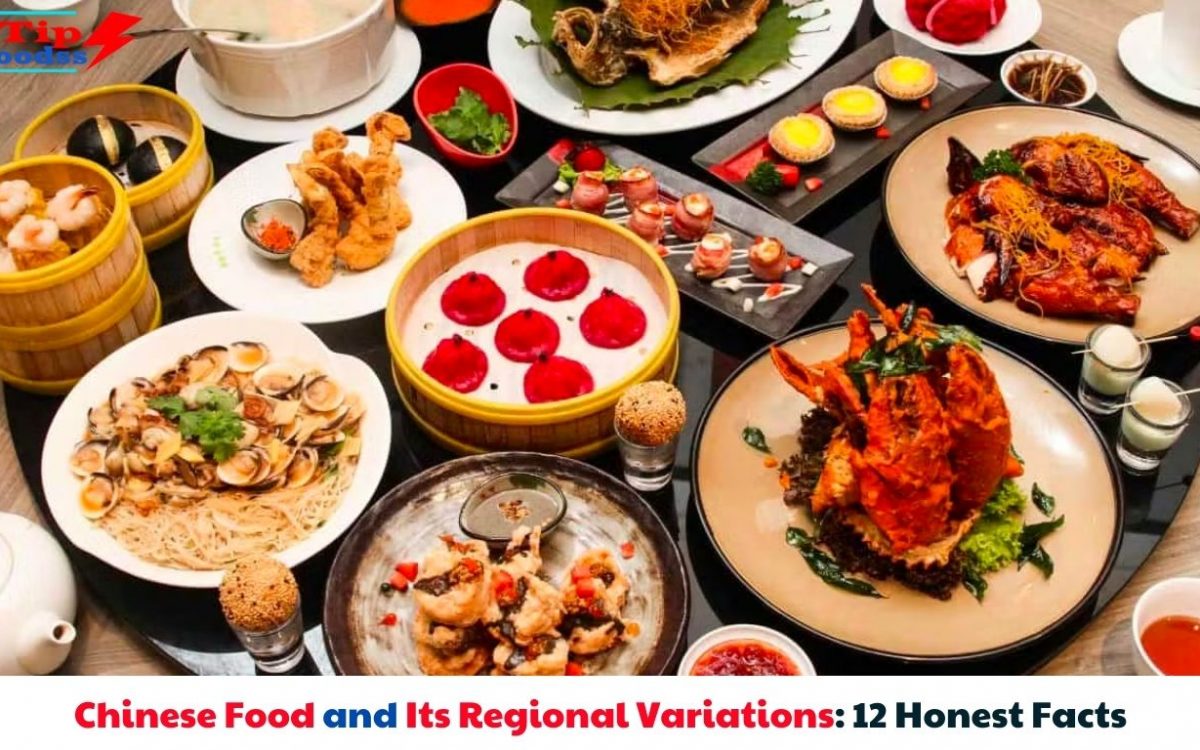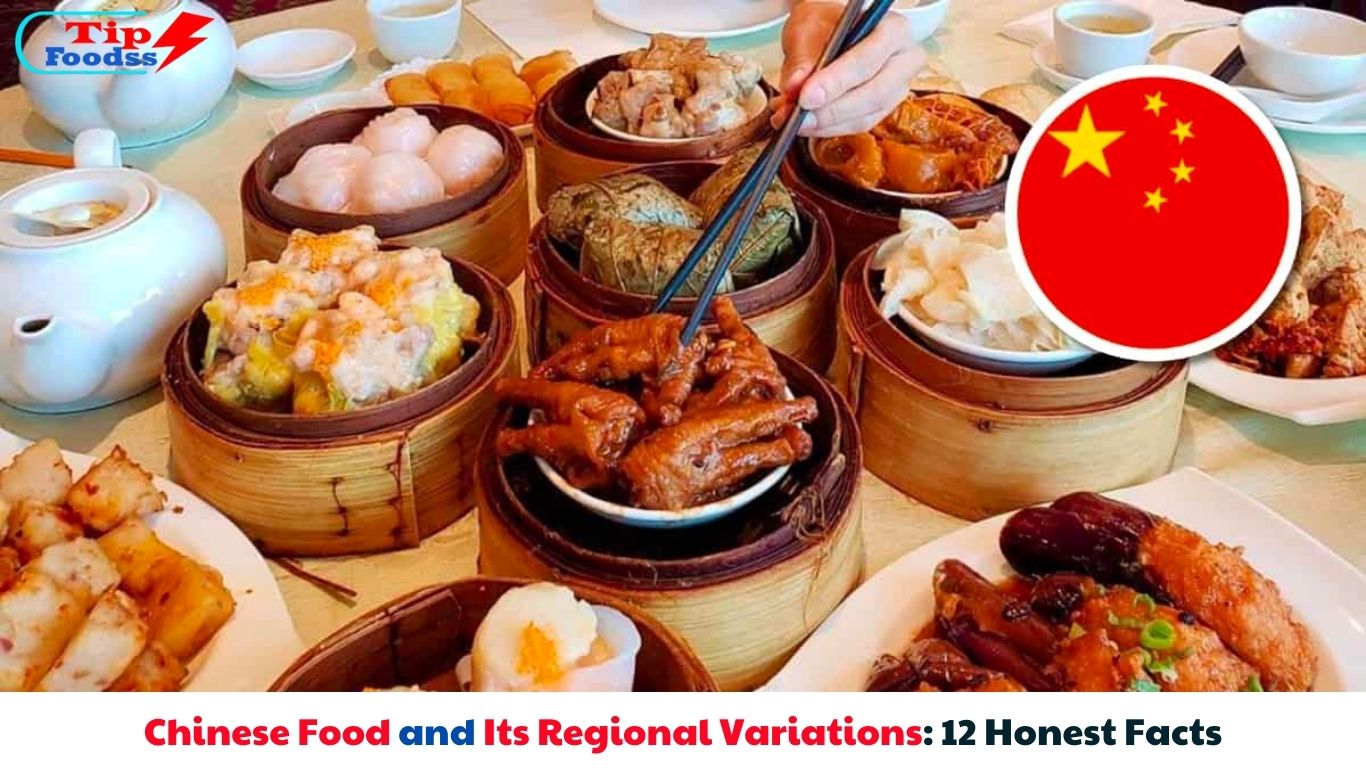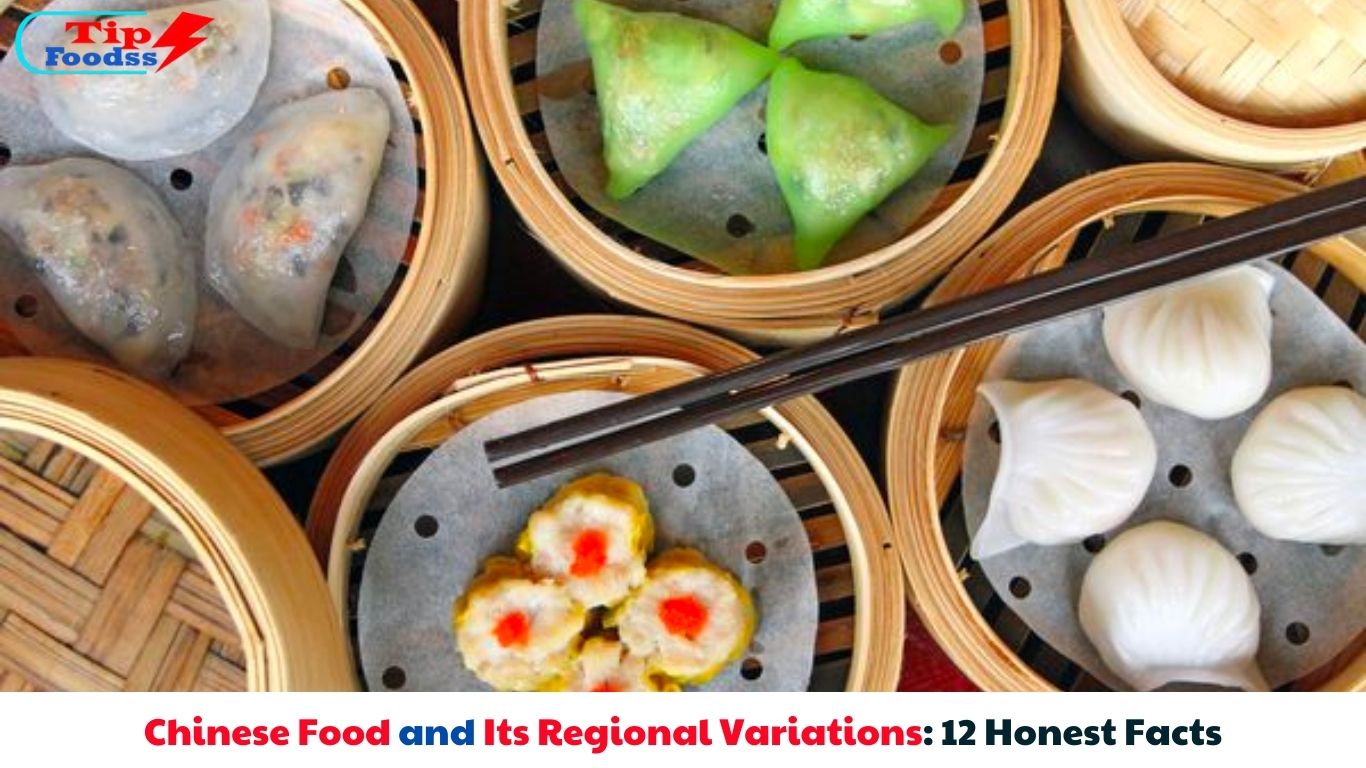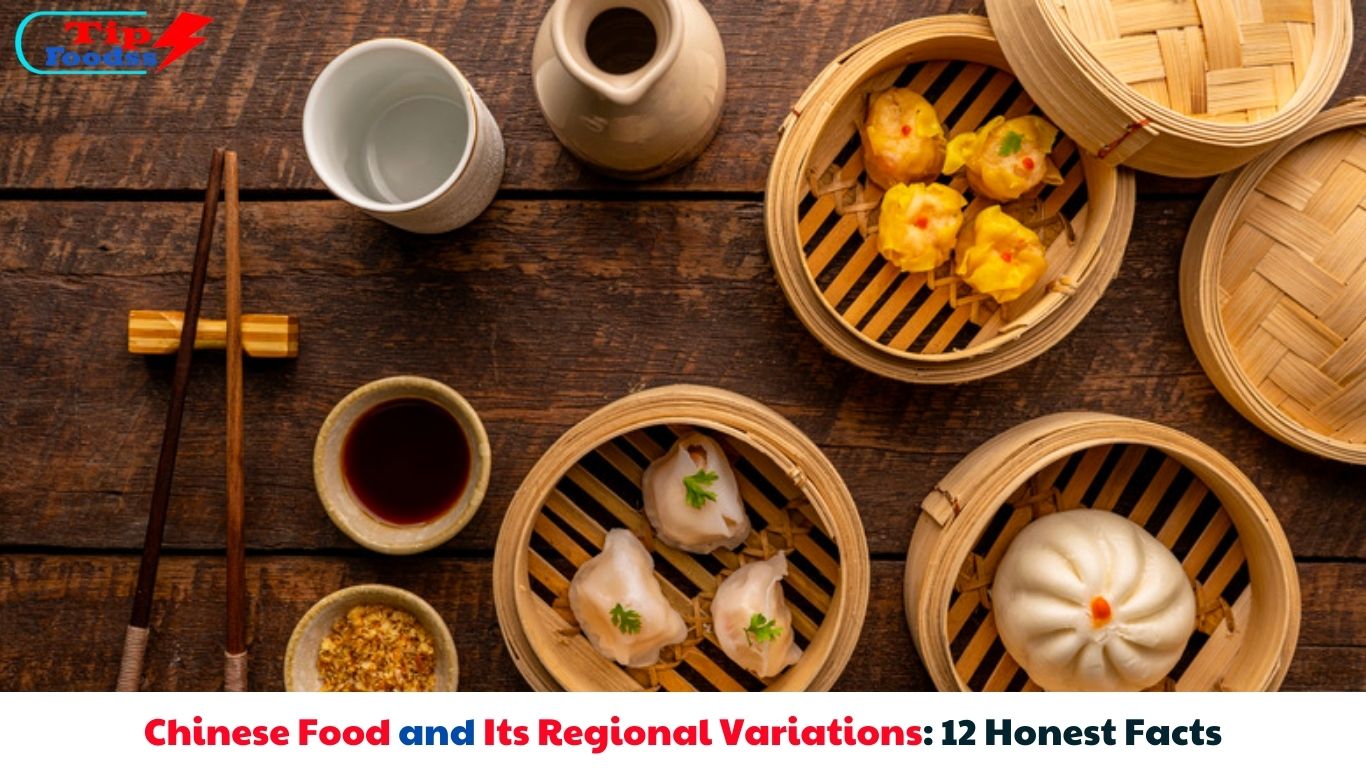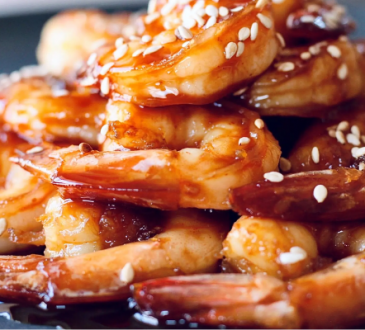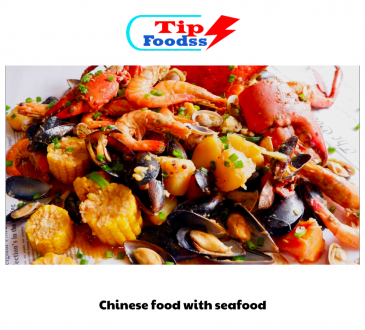Chinese Food and Its Regional Variations: 12 Honest Facts
One of the world’s most varied and tasty cuisines, Chinese food has a long, illustrious history that extends back thousands of years and Chinese cuisine offers a diverse spectrum of tastes and textures that represent the nation’s various regional variants, from fiery Sichuan meals to delicate Cantonese dim sum. Tipfoodss will look at 12 unvarnished truths about Chinese Food and Its Regional Variations in this post.
The Important of Chinese Food in The World
Chinese food and its regional variations is a complex and diverse culinary tradition that has evolved over thousands of years. It is heavily influenced by the country’s geography, climate, and local ingredients, and is known for its rich flavors and textures.
One of the most important aspects of Chinese food and its regional variations is its emphasis on balance and harmony in food. Traditional Chinese medicine teaches that food should be consumed in a way that balances the body’s yin and yang energies, and that different foods have different properties that can affect the body’s health. This has led to the development of many dishes that are designed to be both delicious and healthy.
Another important aspect of Chinese food and its regional variations is its use of a wide variety of ingredients, many of which are not commonly used in Western cooking. These include ingredients such as lotus root, bok choy, and Chinese black mushrooms, as well as more exotic items such as sea cucumber and bird’s nest.
Chinese food is also often served family-style, with dishes shared among the table. This allows for a wide variety of flavors and textures to be enjoyed in a single meal, and is a great way to experience the full range of Chinese cuisine.
In recent years, Chinese food has become increasingly popular around the world, with Chinese restaurants and takeout establishments found in nearly every major city. While many of these restaurants offer a limited selection of dishes, there are also many authentic Chinese food and its regional variations that offer a taste of the country’s diverse regional cuisines.
12 Facts about Chinese Food and Its Regional Variations
- Chinese cuisine is made up of eight main regional styles: Anhui, Cantonese, Fujian, Hunan, Jiangsu, Shandong, Sichuan, and Zhejiang. Each style has its own unique flavors and cooking techniques, which are influenced by geography, climate, and local ingredients.
- Cantonese cuisine is known for its delicate flavors and emphasis on fresh seafood. Dim sum, a type of Cantonese cuisine, is a popular style of small plates that are often served for breakfast or lunch.
- Sichuan cuisine is known for its bold and spicy flavors, which are achieved through the use of Sichuan peppercorns and chili peppers. Popular Sichuan dishes include kung pao chicken and mapo tofu.
- Shandong cuisine is known for its emphasis on seafood and soups, as well as for its use of vinegar and garlic. The region is also famous for its crispy fried dishes.
- Hunan cuisine is known for its spicy and sour flavors, which are achieved through the use of chili peppers and pickled vegetables. Popular Hunan dishes include spicy fish and hot and sour soup.
- Anhui cuisine is known for its emphasis on wild herbs and mushrooms, as well as for its use of braising techniques. The region is also famous for its use of bamboo shoots and river fish.
- Jiangsu cuisine is known for its delicate flavors and emphasis on seafood and soups. The region is also famous for its use of freshwater fish and shellfish.
- Fujian cuisine is known for its emphasis on seafood and soups, as well as for its use of pickled vegetables and fermented sauces. The region is also famous for its use of red cooking techniques, which involve braising meat in soy sauce and sugar.
- Zhejiang cuisine is known for its emphasis on fresh, seasonal ingredients, as well as for its use of bamboo shoots and freshwater fish. The region is also famous for its use of Hangzhou-style dishes, which feature light, delicate flavors.
- Chinese food is often eaten family-style, with dishes shared among the table. This allows for a wide variety of flavors and textures to be enjoyed in a single meal.
- Chinese cuisine is heavily influenced by traditional Chinese food and its regional variations, which emphasizes the importance of balance and harmony in food. This has led to the development of many dishes that are designed to promote health and well-being.
- Chinese food has become increasingly popular around the world, with Chinese food and its regional variations and takeout establishments found in nearly every major city. While many of these restaurants offer a limited selection of dishes, there are also many authentic Chinese restaurants that offer a taste of the country’s diverse regional cuisines.
Conclusion
In conclusion, Chinese food and its regional variations offer a wide range of flavors and textures that reflect the country’s rich culinary history. From spicy Sichuan dishes to delicate Cantonese dim sum, there is something for every palate. By exploring the many regional styles of Chinese food and its regional variations, you can gain a deeper appreciation for the country’s diverse culinary heritage. So why not try something new and discover the delicious world of Chinese food today?

